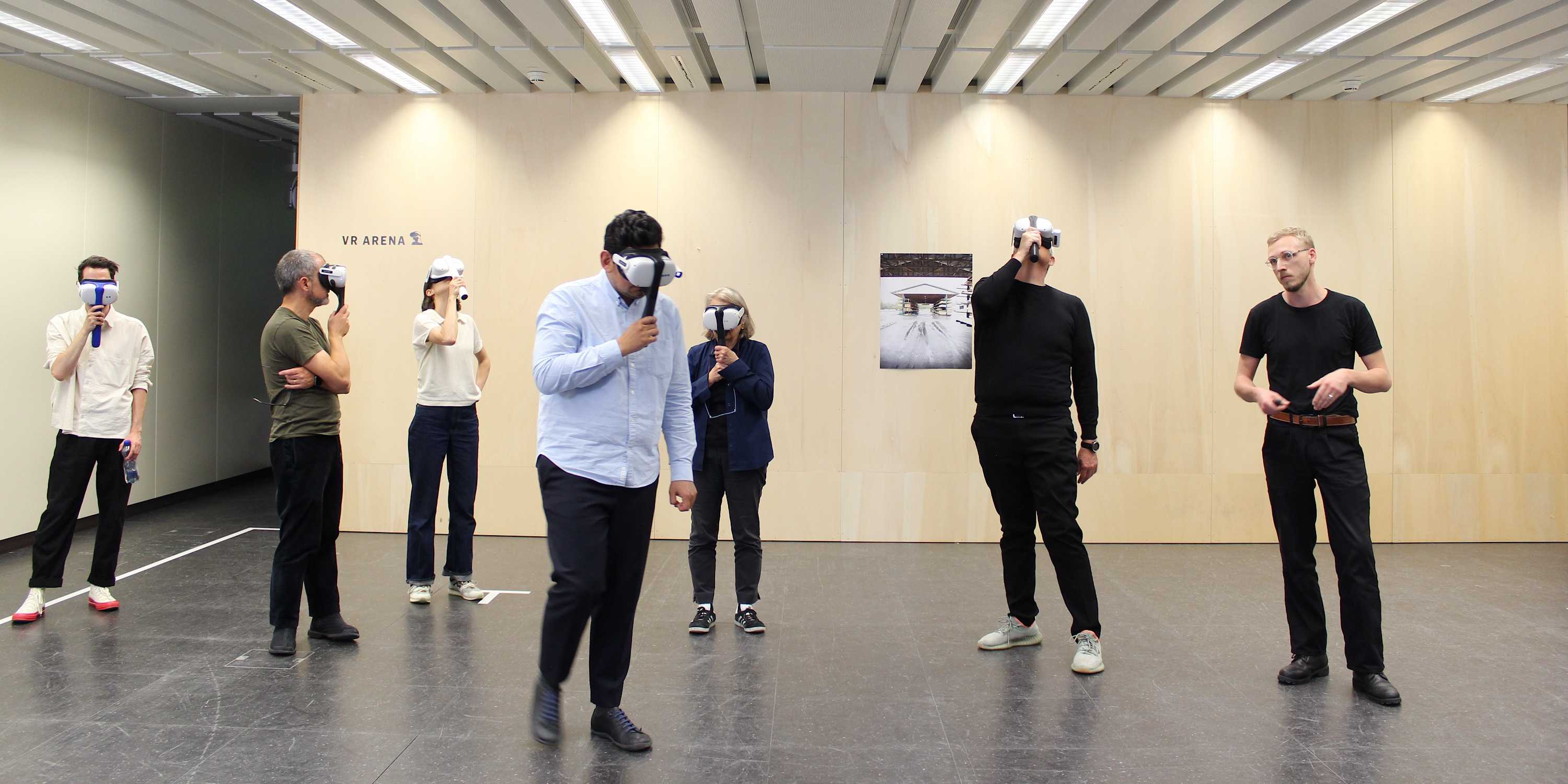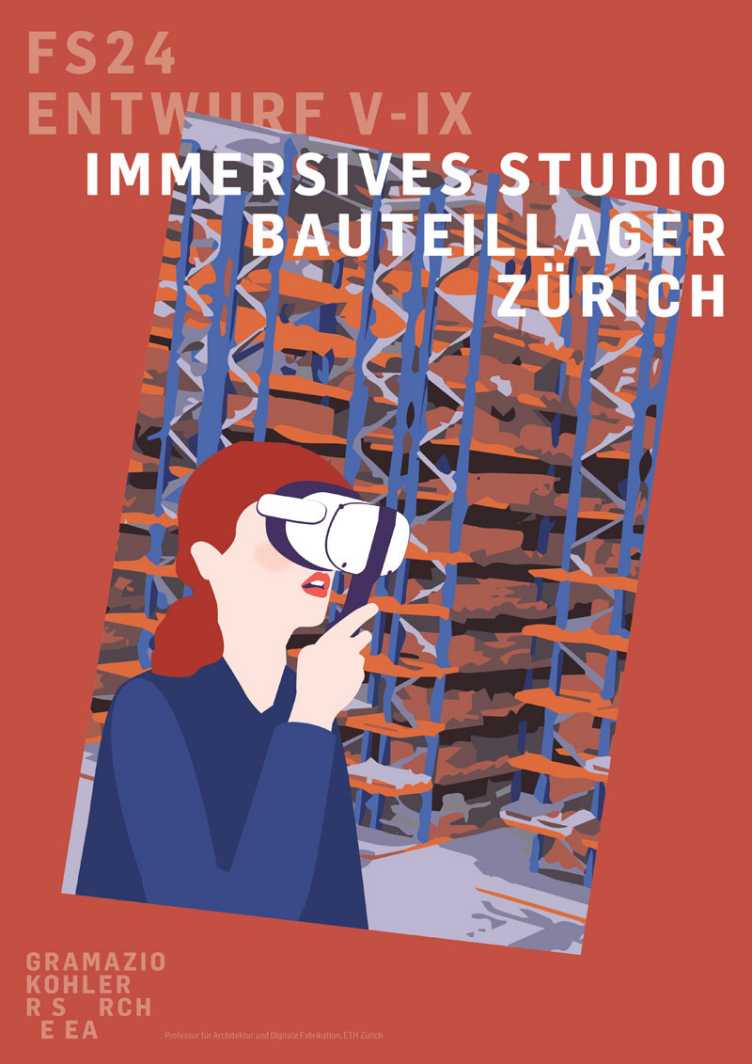Designing in virtual space
At Gramazio Kohler's chair, the students plan and present an entire design semester in a 3D model. The interim review of the immersive studio takes place in the digital space using VR glasses.

Interim review in the VR Arena (Photos: Gramazio Kohler Research, ETH Zurich)






